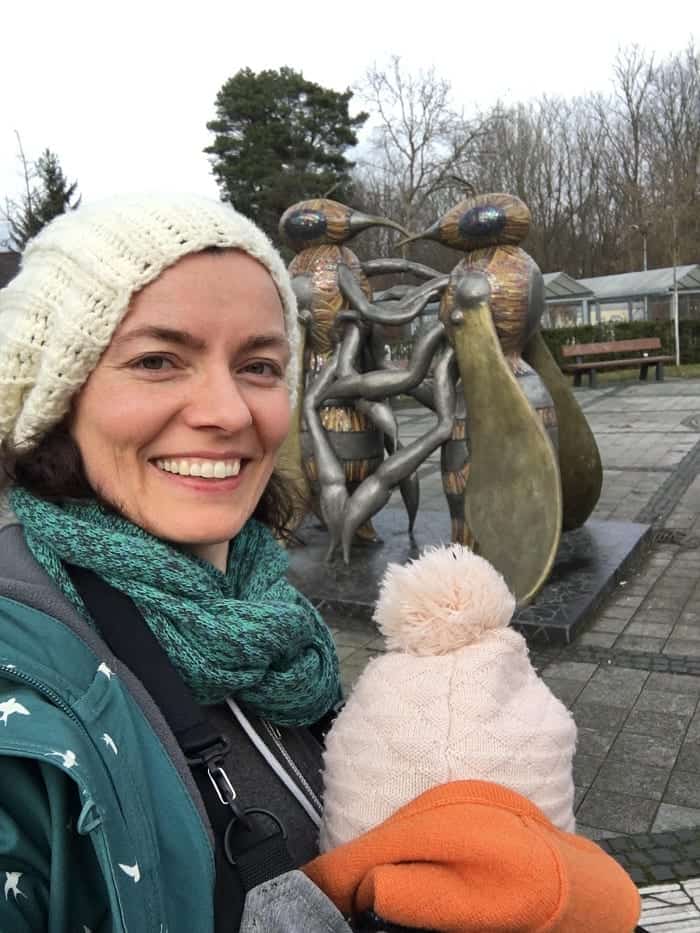If you have ever gazed upon a modern cityscape and wondered why certain buildings, facades and gardens look the way that they do, you will want to head to the Bauhaus Archive for some answers. This museum and library, often referred to as “a temple of design,” is dedicated to the Bauhaus School, one the twentieth century’s most significant arts institutions. It is well worth a visit for anyone who is interested in modern architecture, twentieth century painting and post 1920’s design.
+++The Bauhaus Archive is a 10-15 minute walk away from Berlin's park Tiergarten, the Berlin Zoo and the Kaiser Wilhelm Memorial Church. The Grosser Stern is also a short walk away - climbing up the column with the golden angel is a great way to see the Berlin Skyline for only 3 EUR.+++
History
The Bauhaus Archive/ Museum für Gestaltung is a repository for art, documents, sculpture and literature that relates to the Bauhaus School, the highly influential school of architecture and design that operated in Weimar, Dessau and Berlin between 1919 and 1933. Founded by Walter Gropius, an architect regularly cited as one of the pioneers of modern architecture, the school was a hotbed of creativity and an important institution in Germany’s liberal interwar period. The Weimar Republic abolished censorship, and as a result the country experienced a surge of “radical experimentation in all of the arts.”
Bauhaus and the art
Artists such as Paul Klee, Wassily Kandinsky and Lyonel Feininger flocked from around Europe to the Bauhaus School to create, debate and workshop new ideas. They were highly influenced by the work of late Victorian British artists William Morris, who aimed to eliminate the gap between function and form in everyday objects. According to Morris, this meant that even the most mundane item should be beautiful, but for the Bauhaus School artists differed on this point. For them, buildings and objects should stress minimalism and functionalism instead of decoration; art and technology working together seamlessly without compromising their individual importance.
By removing what they felt was needless ornamentation, the Bauhaus adherents felt that they could help to question and eliminate class differences. Though the two styles are often conflated in contemporary times and can at times appear similar, Art Deco was all about luxury and privilege while the Bauhaus aesthetic emphasized function, simplicity and equality between rich and poor.
The rise of National Socialism saw the School face harsh criticism, as their aesthetic was criticized for being “un-German” owing to its lack of ornamentation and preference for flat-roofed buildings. By 1933 the Bauhaus School was forced to close by the Gestapo, who felt that their work was “degenerate” and influenced too heavily by Jewish culture. However, since that time, Bauhaus design and architecture has clearly gone from reviled to revered.
By 1960 Walter Gropius founded an archive to collect and conserve materials relating to the School and its affiliated artists. Members of the movement donated pieces and gave their support for a museum, and the current building was designed by Gropius and constructed between 1971-79. The Bauhaus Archive has since attracted millions of visitors, both to view its collection and to appreciate the stunning bespoke structure in which it is located.
While the museum is small, it houses an important permanent collection and features rotating special exhibits four times per year. Due to space constraints, the trust is only able to showcase 35% of their archive at any one time, and so Bauhaus admirers will be happy to know that a new extension is currently in a planning phase. It will be opened in 2019, in time for the centenary of the founding of the School.
Whether you are an amateur architecture buff, a hobby painter or a seasoned arts professional, this museum is worth a visit!
Visiting the Bauhaus Archiv
Hours:
Wednesday – Monday: 10 am–5 pm; closed Tuesday
Admission (includes audioguide):
Adults: Wed/Thurs/Fri – 7 Euros; Sat/Sun/Mon – 8 Euros
Reduced: Wed/Thurs/Fri – 4 Euros
Sat/Sun/Mon – 5 Euros
Location:
Klingelhöferstrasse 14
D - 10785 Berlin
Public transport:
By Ubahn to Nollendorfplatz station
By bus: lines 100, M29, 187 and 106, Lützowplatz stop




